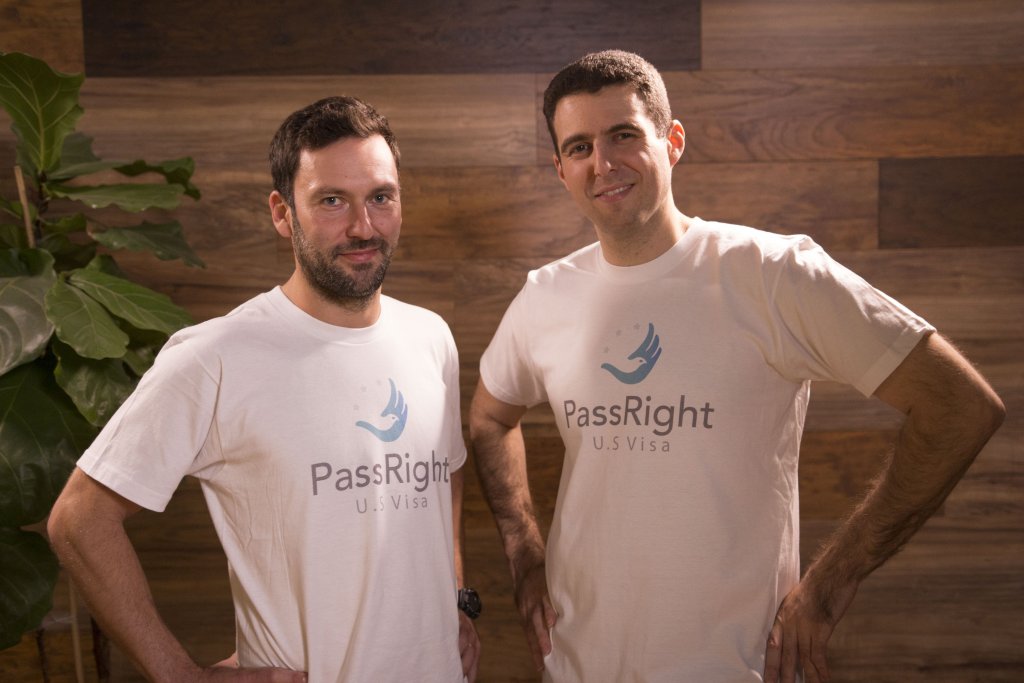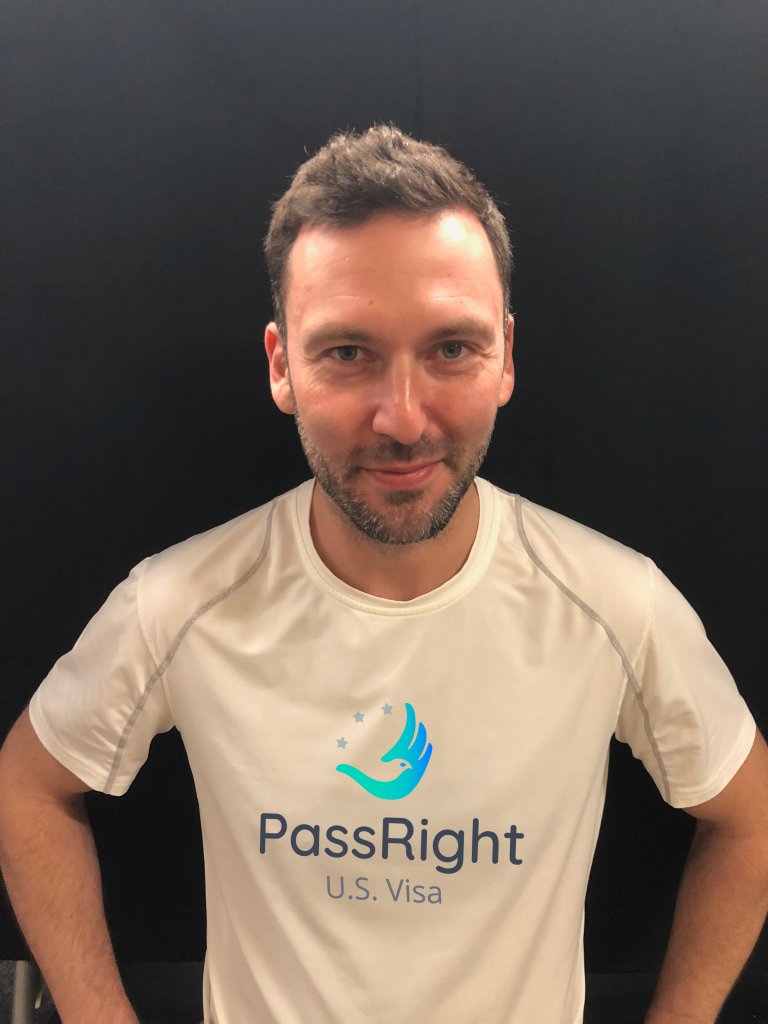“Extraordinary” green card: U.S. immigration options for entrepreneurs
Changes to the U.S. immigration legislation create additional obstacles for some categories of people who want to come to the United States. In practice, however, people owning successful businesses in their home country or creators of promising startups might actually come to the United States and receive a green card without many years of waiting. This article offers several examples and gives advice on how to ease the immigration process.

Liran Rosenfeld and Gal Talmor know how to ease the immigration process dramatically.
Liran Rosenfeld came to Silicon Valley from Israel two years ago for what he thought was a short trip — to present his company in a startup competition. Working with potential investors, he realized that if he was to promote his company among real partners and raise significant capital, he had to work longer and stay in the United States permanently. That was when Liran faced the need to apply for an immigration status — a much more complicated procedure than it looked at the beginning.
“As I met with more and more founders of young companies that I had known, I found out that the entire issue of immigration was a baffling, agonizing and costly journey,” Liran says.
The Israeli entrepreneur had a consultation with an immigration attorney who offered him to simply prolong his tourist visa for $1,000, and charged $150 more for the consultation.
“I told him that I had heard of people attempting to do just that, but ending up overstaying their visa. Therefore, I was not interested in it. The next thing the attorney offered me was an O-1 Visa, one that is extended to entrepreneurs who possess “extraordinary abilities”. The legal fee for the visa was $7,500, and it would not allow my wife to work legally in the U.S. I refused,” says Rosenfeld.
He decided to meet and talk with more attorneys, but this time without paying for consultations. One possibility offered by attorneys was an L-1A visa, which requires opening an affiliated branch in the U.S. or, in case of an individual entrepreneur, moving the business to the U.S.
“This visa demanded that I move my existing business to the U.S. and prepare a new business plan for it. This visa also required that I come up with proof for all kinds of things that I had no idea whether I could prove or not. The cost for an L-1A Visa would be $10,000. Then again, when I approached a third attorney, he recommended that I get an E-2 visa, which is an investment visa for “non-millionaires” and would cost $12,000. In order to get this visa, I would have to use some of my seed funds. This would provide proof that I was investing in the U.S. Each of the immigration specialists I met offered me a different visa for a different price. This was exasperating. How are you to choose the right path?,” says Liran.
The entrepreneur said many of his friends who are startup founders had underwent the same ‘headache’ and were not satisfied with the results.

Those who want to apply for EB-1 visa should better start the process back in their home country, Liran says.
“Meet attorneys, get different references and eventually decide on someone without really knowing what is in store. Some of my friends were so busy developing their businesses that they were determined not to go through this,” Liran says.
Another problem, the entrepreneur says, is that you can’t possibly check how professional an attorney is. After you sign an agreement, your case might be moved to paralegal’s hands or someone who might not even be an attorney.
“Eventually, a friend from Argentina told me about another friend who received a green card because he was an entrepreneur, and that he got it within six months. He meant receiving a green card through EB-1 visa. I was impressed: why none of the attorneys I spoke with ever suggested this option to me? I mean the EB-1 and EB-2 visas that me and my wife could have applied for,” Liran says.
The EB-1 immigrant visa offers an opportunity for foreign citizens with outstanding abilities in the field of science, art, education, business or sport to apply for permanent residence in the United States. However, with one detail — the talent of the applicant should receive broad public recognition at the national or international level, or be confirmed by appropriate documentation in a particular field. This includes not only outstanding figures of science and culture, but also teachers, researchers, managers, and business leaders. For this visa, it’s not required to have an American employer.
“After a short while I found an immigration attorney who was an EB-1 specialist. She explained to me that EB-1 is the fastest way to get hold of a ten-year green card, and five years later you can apply for citizenship,” Liran says.
The attorney said she would charge $15,000 for the visa and guaranteed to give money back in case of rejection by the immigration authorities. As a result, Liran Rosenfeld was granted a status of permanent residents after seven months. However, it wasn’t that easy.
“Four months later, I got an RFE, a Request for More Evidence. This made me extremely concerned. What if I chose the wrong attorney? What will happen if I get rejected? Will she really return my money? At that time I began to be homesick. I planned to go home to visit my family and attend my cousin’s wedding. My grandmother was sick and here I was, trapped in the U.S. I could not leave while I was in the process. This was a nightmare for me. If I left, it meant I would not be able to come back. This opened my eyes that if one wants to go through an EB-1, one had better do it from home with no rush, or while one already has another legal status/visa in the U.S.,” Liran says.
The same path was chosen by a prominent Russian artist and fashion designer Aleona Isakova. For 14 years she was the head of Favore haute couture house (Switzerland – Russia), creating collections that were a success around the globe, including Great Britain, Israel, Australia and the United States. Aleona told her story in a blog post for an immigration community.
“My husband and I decided to ask for this specific visa. It could be applied for in Russia, but we decided to do it from the United States, where we arrived on a tourist visa. We spent three months on gathering my portfolio. We had to include everything: posters from exhibitions in different countries, invitations, photographs. We had to translate hundreds of pages of articles and interviews… It all looked optimistic; I was able to receive brilliant recommendation letters prior to my departure, and the portfolio looked impressive and nice. We cheered up and started waiting,” Aleona wrote.

Artist and fashion designer Aleona Isakova. Photo: YouTube.
Nine months later the designer received a response from Texas: an immigration officer rejected most of the documents they sent.
“He wrote that our articles were from insignificant media — ELLE magazine seems to be a mere name for the Texan. The most terrible thing was that he said my recommendation letters were provided by insignificant organizations. He gave an example — a quote from a recommendation by the State Hermitage Museum! To be honest, I was shocked, and our attorney was shocked as well. We didn’t even have a Plan B. It was very sad. The Texas ‘expert’ gave us some time to add more documents, but it was so difficult to find strength and do more. The attorney literally persuaded us to look for recommendations by American experts, and penned a letter explaining the Texan officer the significance of the Hermitage for the global culture,” Aleona wrote.
By that time the artist had earned local clients and exhibits. She asked for recommendation letters from organizers of the exhibits, and six months later received the coveted green card.
“It seems to me it’s quite difficult to receive EB-1 now, but it’s worth trying. You better have recommendation letters from American experts. And it’s better that Americans know the media you have publications in. And you definitely should have a Plan B,” Aleona wrote on the community website.
This is why Liran and many immigration attorneys propose starting with ‘safer’ nonimmigrant visa, O-1. After you receive it, you’re free to apply for EB-1 or EB-2, but you still have this ‘safety net,’ your approved legal status. Even if you get rejected for an EB visa, you might apply for it again.
O-1 is similar to EB-1, with the only difference it’s a nonimmigrant visa, i.e. its holders cannot automatically apply for a green card. O-1 is also designated for people with extraordinary abilities in art, sports, science, education, or business. To prove your extraordinary abilities, you must meet at least three of the criteria below:
- Receipt of international or national prizes and rewards;
- Published materials in media;
- Membership in associations that require outstanding achievements;
- Original scientific, scholarly, or business-related contributions of major significance in the field;
- Authorship of scholarly articles in professional journals or major media;
- High salary or other remuneration for services;
- Participation on a panel, or individually, as a judge of the work of others;
- Employment in a critical or essential capacity for organizations and establishments that have a distinguished reputation.
Still, Liran Rosenfeld believes that his own example shows that receiving EB-1 immigration visa by a startup founders is quite possible.
“When I came to the U.S, I had no idea that I could stay there legally. When I started squandering time on immigration attorneys, I had no clue this was an area that was inundated with untrustworthy professionals. I had no inkling that EB-1 and EB-2 belonged to a very small niche of attorneys who could actually write and carry out such a case.
“In addition, I had no suspicion that despite the fact that I was never rich and had very basic education, that I could actually apply for a green card and really get it. When you read about the requirements for EB-1 or EB-2, you think you should be a Nobel Prize winner. But entrepreneurs like me can apply as well,” Rosenfeld wrote.
He says that if you decide to go for it, you should choose an attorney carefully using the following criteria:
“Make sure you get a money back guarantee included in the agreement; that the attorney is an EB-1/2 expert. Make sure you are willing to invest plenty of time to dig into your past and support the evidence needed,” he says.
EB-1 visa requirements are similar to those for O-1. Liran recommends meeting three out of the listed criteria below to prove extraordinary ability in your field:
- Evidence of receipt of nationally or internationally recognized prizes or awards for excellence;
- Evidence of your membership in associations in the field which demand outstanding achievement of their members;
- Evidence of published material about you in professional or major trade publications or other major media;
- Evidence that you have been asked to judge the work of others, either individually or on a panel;
- Evidence of your significant scientific, scholarly, artistic, athletic, or business-related contributions to the field;
- Evidence of your authorship of scholarly articles in professional or major trade publications or other major media;
- Evidence that your work has been displayed at artistic exhibitions or showcases;
- Evidence of your performance of a leading or critical role in distinguished organizations;
- Evidence that you command a high salary or other significantly high remuneration in relation to others in the field;
- Evidence of your commercial successes in the performing arts.
To facilitate the process, Liran and his two partners, Gal Talmor and Liat Portal, have developed their own platform, PassRight, which allows potential immigrants to determine a visa category appropriate for them.

Liat Portal
The key priorities of the project are family and business immigration, including corporations, startups, and attracting talented individuals. Users can choose from two options: either fill in the necessary documents through the website by themselves, or pick an immigration attorney. The creators of the project assure: the lawyers they selected are certified licensed professionals with experience in working with the above categories of people.

Gal Talmor participated in development of PassRight platform that allows potential immigrants choose an appropriate visa category.
If potential immigrants decide to act on their own, they are offered a set of options from which they choose suitable type of immigration: work, study, investment, family immigration, etc. Applicants, through guiding questions for each option, are able to check whether their situation meets the required conditions, and then fill in the documents.
“Immigration means that you are new to a new country, with an unfamiliar culture and a different language, and you need to start your life again. Most of us, immigrants, are challenged with issues related to family, financial, employment, social, housing, transportation and much more. The first year in America is so hard for everyone, regardless of where you come from or your socio-economical background. The choice of a suitable immigration lawyer, as already mentioned, is fraught with many difficulties. You are unable to test their professionalism and predict their success rate, the process of their work on the case is often too slow, and legal fees for the services are too high.
“When I started dealing with immigration issues as a technical specialist, I realized how much in this process can be automated to help people reduce the stress of an ‘immigrant nightmare.’ Our project is designed to have both lawyers and immigrants working together which makes the process more transparent, more accurate, safer and for a fraction of the cost,” Liran summed up.
This material is published in a partnership with PassRight U.S.Visa.
Читайте также на ForumDaily:
What It’s Like to Be a Retired Immigrant in New York
Athos, Porthos, and Atheist: Stories of Three New-York Homeless People from the Former USSR
‘Green card’ victims: how to find protection from abusive husband and avoid being deported
Russian-speaking immigrants missing in the U.S.: a story of a New York City disappearance
Rainbow over Brighton: Why LGBT still feel discriminated in the Russian neighborhood
Подписывайтесь на ForumDaily в Google NewsХотите больше важных и интересных новостей о жизни в США и иммиграции в Америку? — Поддержите нас донатом! А еще подписывайтесь на нашу страницу в Facebook. Выбирайте опцию «Приоритет в показе» — и читайте нас первыми. Кроме того, не забудьте оформить подписку на наш канал в Telegram и в Instagram— там много интересного. И присоединяйтесь к тысячам читателей ForumDaily New York — там вас ждет масса интересной и позитивной информации о жизни в мегаполисе.











